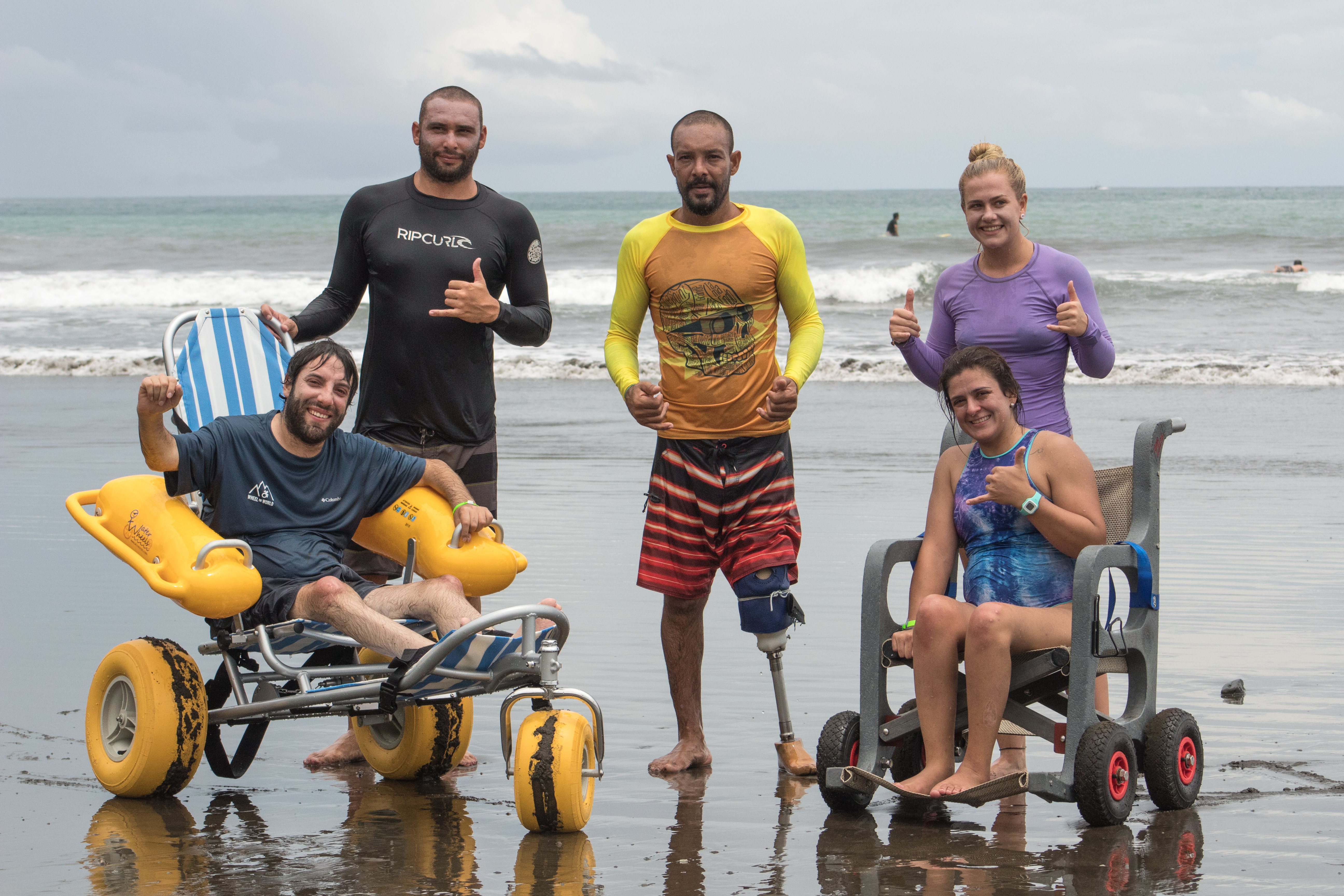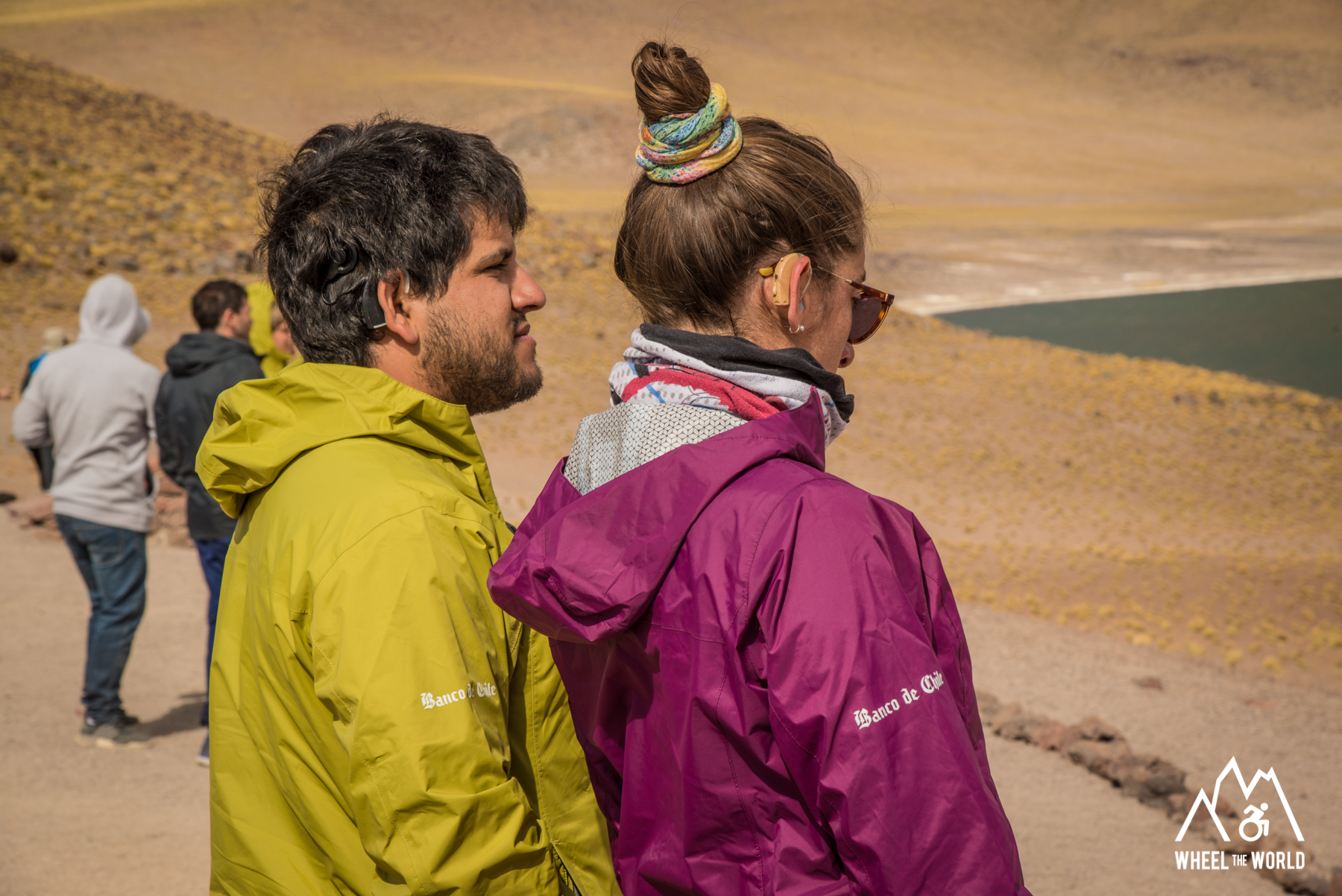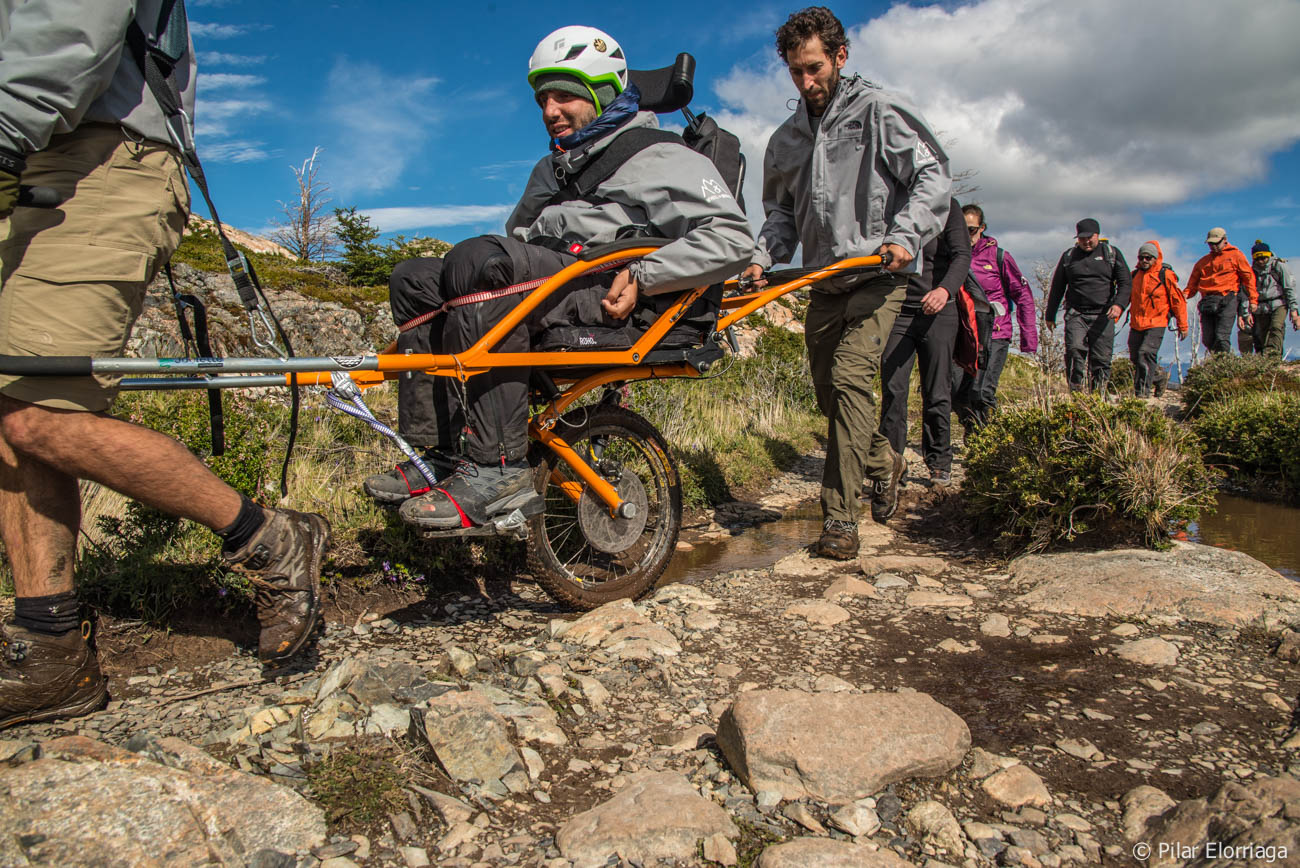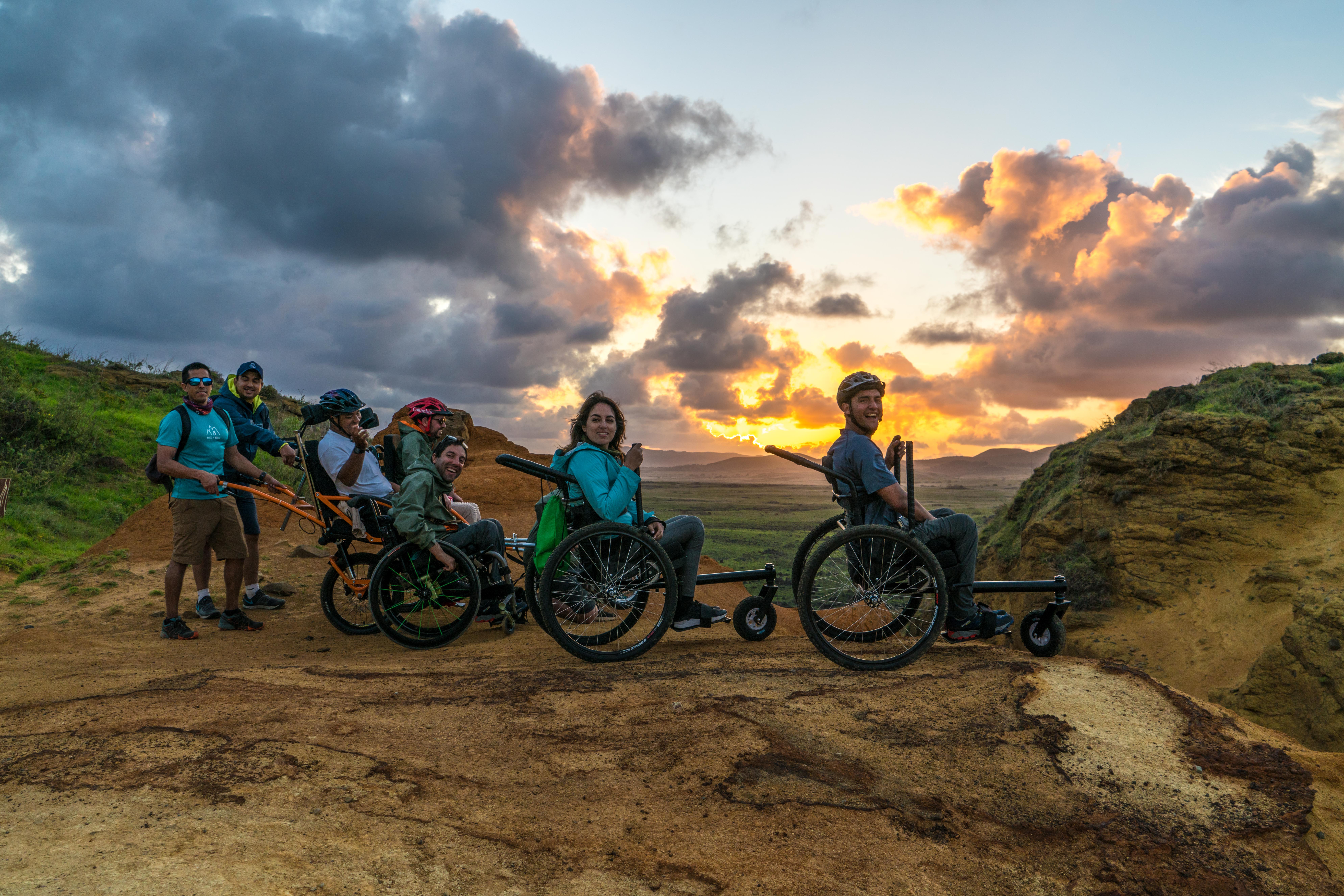Adventure travel has long prided itself on being more inclusive and working with local communities in a way that mass travel does not. However, many people associate adventure travel with physical activity done by people who are not living with a disability. This perception leaves out a large segment of the world’s population who have physical or mental disabilities, but also have a keen desire to fully experience the world. The winner of the Adventure Travel Trade Association’s (ATTA’s) 2018 Adventure in Motion short film competition reminds us that Adventure is for All:
“My needs for accommodations as a disabled person are not special. They are a basic human right.”
In a Quartz article about traveling while disabled, journalist and global speaker on disability representation Wendy Lu wrote: “My needs for accommodations as a disabled person are not special. They are a basic human right.”
“Accessible tourism is the ongoing endeavour to ensure tourist destinations, products and services are accessible to all people, regardless of their physical limitations, disabilities or age. This includes publicly and privately owned tourist locations, facilities and services” (source: United Nations).
Only 54% of respondents to an Expedia survey about inclusive travel said they have seen options that are accessible to all abilities when booking a trip, while just 52% said they have seen options that are inclusive of all types of travelers.
ATTA has publicly recognized the importance of increased accessibility in adventure travel since at least 2008, when the Adventure Travel World Summit in Sao Paulo, Brazil featured a concurrent session on Innovation & Best Practices: Serving Specialty Needs - Accessibility and Adventure. Although the travel industry is beginning to understand this and accommodate a wider range of people, there is more work to be done.
The Importance of this Segment
Over 1 billion people globally live with some form of disability, equivalent to 15% of the world’s population. This population has nearly half a trillion dollars in disposable income, and they spend $95 billion on travel alone each year.

In the U.S., 25.5 million Americans age 5 and older have self-reported travel-limiting disabilities–13.4 million are aged 18 to 64, and 11.2 million are aged 65 and older. Research by Open Doors Organization (conducted in summer 2020) found that from 2018-2019, 27 million U.S. travelers took a total of 81 million trips and spent $58.7 billion on just their own travel, up from $34.6 billion in the prior 2015 study.
Types of Disabilities
There are many types of disabilities that affect a person’s needs while they travel. One important factor is that disabilities are not always visible. In some cases, such as with people on the autism spectrum, with hearing or visual impairments, or with sensory disorders, it may not be immediately clear by looking at a person that they need accommodations.

According to the World Health Organization's (WHO) international classification, disability has 3 dimensions:
- Impairment in a person’s body structure or function, or mental functioning; examples of impairments include loss of a limb, loss of vision, or memory loss.
- Activity limitation, such as difficulty seeing, hearing, walking, or problem solving.
- Participation restrictions in normal daily activities, such as working, engaging in social and recreational activities, and obtaining health care and preventive services.
This means more than offering paved trails and elevators to accommodate wheelchairs. People with disabilities may need more information to be comfortable when making decisions about travel; challenges and extra burdens can be related to communications, emotional stressors, time, investment, and many other factors.
Traveling with Disabilities
People with disabilities face hurdles at every stage of a trip, from the dreaming phase through reflection.
Dreaming
It may be intimidating to even think about what a dream trip would look like, as very little marketing shows diversity, and few destinations and suppliers even mention any special accommodations they are able to offer. Although studies show that diversity in ads correlates to gains in revenue and brand perception, only 1% of travel marketing is representative of disabled travelers.
While some people immediately see themselves and their desires portrayed by people who look like them in ads and on websites along with plenty of trip options, travelers with disabilities or others who don’t see themselves represented are left to worry about whether their needs can be met, if they’d be comfortable, or even if they’d be safe. Organizations like the All Inclusive Photo Project are working to make all travelers feel more welcome by expanding media representation.
Planning
This lack of information offered publicly means travelers with disabilities need to contact multiple suppliers to ask if and how they can be accommodated, each time explaining personal health factors and justifying their requirements. Even well-meaning suppliers may not know what to ask, how to respond in a kind and respectful way, or how they can actually serve different needs.
Some companies like Scandic Hotels do offer information about how they ensure their hotels are accessible to all; they also have a downloadable 159-point checklist that can serve as a reference for other lodgings trying to become more accessible. Wheel the World also provides accessibility details including bed height, door width, sink height and more for hundreds of hotels on their website. Having this information available online takes some of the burden off individual travelers, also making them feel more welcome.
Google Maps also allows users to search for wheelchair-accessible public transportation routes in much of the world, giving travelers researching a new destination some insight into how they can get from place to place.
Many times, luxury travel advisors and operators are the only ones positioned to offer custom itineraries and services that allow people with disabilities to travel. However, the cost to access these services is often out of reach of the people who need them most, especially when it comes to bringing companions, as can often be required. In Quartz, Wendy Lu wrote that, “People with disabilities are more likely to earn low incomes and have less access to the resources necessary to afford those luxury options in the first place. This is especially true for disabled people of color.”
Especially for this stage and the next (Booking), having an accessible website can greatly benefit potential travelers with disabilities such as visual impairments. Ireland's National Disability Authority (NDA) is a good source of information about how to do this.
Booking
Especially in the current age of many service providers offering a base product for one price and charging extra for every additional feature, travelers with disabilities are stuck paying a much higher price for basic access. Again, according to Wendy Lu, “On average, a business class airline ticket can cost up to four times more than an economy or coach ticket. But for disabled people who need these accommodations, it’s not a matter of luxury, or splurging, or pampering yourself … It means having to spend extra money on high-end services—or not traveling at all.”
Although it simply may cost more for suppliers to provide additional equipment, support people, transportation, and other services, the prices passed along to consumers should be fair and transparent. Depending on safety and other considerations, suppliers can also be flexible by accommodating needs like service animals, air conditioning and mini-fridges in guest rooms (e.g., to store medicine that needs to stay cool), hearing or vision devices, etc.
Experiencing
Lu describes a key consideration for inclusive tourism: “When a disabled person travels with a group of abled people and they come across an inaccessible stop on their trip, one of two things tends to happen: Either the disabled person gets left out, or the group finds an alternative activity, which can often make the disabled person feel like a burden. If more features provided access with everyone in mind, this wouldn’t be the case. Traveling is supposed to be about discovering new things about the world around you, and yourself, not navigating an awkward web of compromises and missed opportunities.” This is a very important point, and some organizations are taking action to increase equity among travelers.
Pioneer Jon Gunnar Benjaminsson, owner of Iceland Unlimited (currently the only travel agency in Iceland specializing in accessible tours), saw in 2011 that there was a need for exciting but safe tours for people of all abilities. Having been paralyzed from the waist down in 2007 in a severe car accident, Benjaminsson has a personal understanding of the needs of travelers who use wheelchairs, and works to accommodate them.
Various new equipment and companies are making adventure experiences more accessible to all travelers. AdvenChair is an all-terrain, human-powered hiking wheelchair that activity providers can purchase to expand their capabilities and client base – a team of one to five people can navigate the AdvenChair over rugged, soft or steep terrain with the stability and durability of a mountain bike. Wheel The World discusses more adaptive equipment on their website and also plans and books accessible tours for travelers.

There are many more examples of actions being taken in the tourism industry to improve universal access to tourism–these resources are linked at the bottom of this article.
Reflection
The final stage of the trip process is reflection. Travelers remember their experiences, tell others about it, share reviews, and choose how to interact with the people and organizations they meet during their trip.
Sharing is a key component of this reflection process. Although many people are now posting on social media and sending photos to friends and family throughout their trip, a lot of sharing happens after returning home. Visitors will post reviews on various websites, and may edit and post remaining photos.
This is an important part of the trip for adventure travel organizations. Not only can they ask for reviews and interactions (e.g., social media likes and shares) from the traveler, but they can also request feedback on how to improve their services and better care for future guests. When taken to heart and acted upon, this important feedback can help progress the adventure industry on the whole towards a more universally accessible future.
Recommendations
There is no single action that adventure travel organizations can do to accommodate all people with disabilities, but there are steps that can be taken to get started.
Tour Operators
- Consider adding signals to those activities that are friendly to different disabilities (e.g., an icon to show wheelchair accessible, self-guided so people can go at their own pace, warnings about heights or small spaces or other possible concerns regarding physical space).
- Consider rating each activity on your website by physical difficulty. When developing your difficulty ratings, consider the activities, the terrain (i.e., trail surface, steepness), altitude above sea level, expected temperature, and amount of time engaged in each activity to determine a rating for the overall itinerary. It is expected that the activity difficulty level may change each day of the trip. Choose a difficulty rating that best represents the overall itinerary. The activity description for each day of the itinerary will alert customers to the difficulty level for that particular day.
Accommodations/Lodging
- Describe your facility’s wheelchair accessibility. Do you have large rooms with wheelchair-friendly bathrooms? Are stairs required? Is climate control available and reliable? How many steps does it take to get from a vehicle to a guest room?
- When possible, allow travelers to choose their own room based on location (e.g., ground floor and quiet space), have options to customize the lighting and sounds, etc.
Restaurants
- Describe your facility’s wheelchair accessibility.
- Be clear about dietary offerings and customizations. Are gluten-free or low-sugar options available?
- Note busy, peak times of service and quieter, slower-paced times of service.
Destinations
- When organizations are listed on your website, allow viewers to filter by various features such as those listed in the sections above.
- Ticino (a region in Switzerland) has a page on their website dedicated to how they are making tourism more accessible.
- Watch the session from ATTA’s AdventureELEVATE Europe 2021 titled Adapting to the Accessible Travel Market.
One resource is Wheel The World Academy, an online training program created for professionals in the tourism industry; participants gain knowledge about disabilities, accessibility, and best practices in accessible tourism. This article from AgingInPlace about wheelchair accessibility in U.S. National Parks is a good example of displaying information about accessible adventures.
Be transparent. Communicate. Provide information. Be patient and kind.
Product Development
Projects are underway throughout the world to make regions more accessible to all travelers. Here are just a few examples:
- The SABER project (“SAntiago, St. BEnedict, Routes Universal”) intends to create an accessible tourism offer by improving facilities and services along two existing itineraries of EU relevance: the “Way of St. James” in Spain, the most popular pilgrimage route to Santiago de Compostela, and the “St. Benedict Way” in Italy, a route linking the most important places related to the life of Saint Benedict from Norcia, the patron saint of Europe.
- Expedia has partnered with Panama to showcase the wonders of the destination that can be experienced by diverse travelers, including with differing abilities.
- Switzerland is committed to inclusive, barrier-free tourism and travel and advises people with or without disabilities on holidays in Switzerland and abroad.

As technology advances, tools like virtual reality can make travel more accessible to everyone in the world, not only those with disabilities. For example, HUVR connects Human Walkers to Virtual Travelers who want to explore the world in real-time.
ATTA looks forward to learning more about the needs of travelers with disabilities related to adventure travel, and how our industry can become more accessible to all.
Additional Resources:
- Society for Accessible Travel & Hospitality (SATH)
- European Network for Accessible Tourism (ENAT)
- No Barriers USA
- Scandic Hotels’ downloadable 159-point checklist that can serve as a reference for other lodgings trying to become more accessible.
- Wheel The World’s blog has lots of inspiration and information.
- ATN article Designing Accessible Adventure Travel: Change the Environment, Not the Body talks about how from destination development to itinerary planning, designing for accessibility requires the examination of the small, everyday, and often overlooked decisions that either raise or lower the barrier to participation.
The ATTA will be hosting a webinar in Q4 2022 about accessibility in adventure travel - watch our upcoming webinars page and our announcements for more information.
